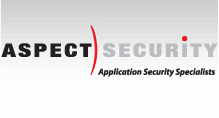This site is the archived OWASP Foundation Wiki and is no longer accepting Account Requests.
To view the new OWASP Foundation website, please visit https://owasp.org
Top 10 2007
FIXUP: {{{1}}}: {{{2}}}
Introduction
Welcome to the OWASP Top 10 2007! This totally re-written edition lists the most serious web application vulnerabilities, discusses how to protect against them, and provides links to more information.
Aim
The primary aim of the OWASP Top 10 is to educate developers, designers, architects and organizations about the consequences of the most common web application security vulnerabilities. The Top 10 provides basic methods to protect against these vulnerabilities – a great start to your secure coding security program.
Security is not a one-time event. It is insufficient to secure your code just once. By 2008, this Top 10 will have changed, and without changing a line of your application’s code, you may be vulnerable. Please review the advice in [Where to Go From Here] for more information.
A secure coding initiative must deal with all stages of a program’s lifecycle. Secure web applications are only possible when a secure SDLC is used. Secure programs are secure by design, during development, and by default. There are at least 300 issues that affect the overall security of a web application. These 300+ issues are detailed in the OWASP Guide, which is essential reading for anyone developing web applications today.
This document is first and foremost an education piece, not a standard. Please do not adopt this document as a policy or standard without talking to us first! If you need a secure coding policy or standard, OWASP has secure coding policies and standards projects in progress. Please consider joining or financially assisting with these efforts.
Acknowledgements
| We thank MITRE for making Vulnerability Type Distribution in CVE data freely available for use. The OWASP Top Ten project is led and sponsored by Aspect Security. | 
|
We’d also like to thank our helpers:
- Raoul Endres for help in getting the Top 10 going again and with his valuable comments.
- Jeremiah Grossman (WhiteHat Security) for peer reviewing and contributing information about the success (or otherwise) of automated means of detection.
- Sylvan von Stuppe for an exemplary peer review.
- Steve M. Christey (MITRE) for an extensive peer review and adding the MITRE CVE data.
- Neil Smithline (BEA Systems) for comments and converting the document from Word to MediaWiki format.
- Andre Gironda for e-mailed comments
A Note About The Different Versions
While the only official version of the OWASP Top Ten 2007 list is the downloadable English PDF version, OWASP has put together this Wiki that initially contains the same content as the PDF. But OWASP hopes that will change with your help. OWASP encourages community involvement and wants your help to make the Wiki version even better. To aid in this they have put together a brief tutorial to get you started.
Downloadable Versions
You can download the Top 10 2007 here:
FIXUP: {{{1}}}: {{{2}}}
Release Candidate 2, 200705091808
FIXUP: {{{1}}}: {{{2}}}
- PDF (980 kb) - Useful for reading the document as is
- Looking for a version in another language? We could use your help translating. Contact ???
FIXUP: {{{1}}}: {{{2}}}